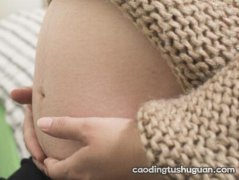感官动词有哪些?用法 ??? 常见的感官动词有:see, watch, look at, notice, observe (五看); listen to, hear (二听); feel, find (二感觉) 。
望采纳
英语的感官动词有哪些? 1、sound
英 [sa?nd] 美 [sa?nd] 。
n. 声音;噪音;音响;海峡;听力范围;医用探子 。
2、see
英 [si?] 美 [si?] 。
vt. 看见;理解;领会;觉察;拜访 。
vi. 看;看见;领会 。
see短语
1、see to:负责 ; 注意 ; 照料 ; 注意做到 。
2、see through:看透 ; 看穿 ; 识破 ; 打个大西瓜 。
3、Holy See:圣座 ; 罗马教廷 ; 梵蒂冈教廷 。
系动词和感官动词分别有哪些? 感官动词
(A)感官动词(及物动词)有:
see/notice/look at/watch/observe/listen to/hear/feel(Vt)/taste(Vt)/smell(Vt)
(B)连缀动词(含感官不及物动词)
be/get/become/feel/look/sound/smell/taste/seem/ appear/grow/turn/prove/go/run
用法
一、look, sound, smell, taste, feel,这五个动词均可作连系动词, 后面接形容词作表语, 说明主语所处的状态 。 其意思分别为"看/听/闻/尝/摸起来……" 。 除look之外, 其它几个动词的主语往往是物, 而不是人 。
例如:
These flowers smell very sweet.这些花闻起来很香 。
The tomatoes feel very soft.这些西红柿摸起来很软 。
二、这些动词后面也可接介词like短语, like后面常用名词 。
例如:
Her idea sounds like fun.她的主意听起来很有趣 。
三、这五个感官动词也可作实义动词,除look(当"看起来……"讲时)只能作不及物动词外,其余四个既可作及物动词也可作不及物动词,此时作为实义动词讲时其主语一般为人 。 (和1有区别)
例如:
She smelt the meat.她闻了闻那块肉 。
I felt in my pocket for cigarettes.我用手在口袋里摸香烟 。
四、taste, smell作不及物动词时,可用于"taste / smell + of +名词"结构,意为"有……味道/气味" 。
例如:
The air in the room smells of earth.房间里的空气有股泥土味 。
五、它们(sound除外)可以直接作名词,与have或take构成短语 。
例如:
May I have a tasteof the mooncakes?我可以尝一口这月饼吗?
taste有品位, 味道的意思
例: I don't like the taste of the garlic. 我不喜欢大蒜的味道 。
She dresses in poor taste.她穿着没有品位 。
look有外观, 特色的意思
例:The place has a European look.此地具有欧洲特色 。
feel有感觉, 感受的意思
六、其中look, sound, feel还能构成"look / sound / feel + as if +从句"结构, 意为"看起来/听起来/感觉好像……" 。
例如:
It looks as if our class is going to win.看来我们班好像要获胜了.
七、感官动词+do 与+doing的区别:
感官动词 see, watch, observe, notice, look at, hear, listen to, smell, taste, feel + do 表示动作的完整性, 真实性;+doing 表示动作的连续性, 进行性
I saw him work in the garden yesterday.
昨天我看见他在花园里干活了 。 (强调"我看见了"这个事实) <我看见了全过程强调过程》
I saw him working in the garden yesterday.(强调"我见他正干活"这个动作)
昨天我见他正在花园里干活 。
感官动词有哪些? 感官动词
(A)感官动词(及物动词)有: see/notice/look at/watch/observe/listen to/hear/feel(Vt)/taste(Vt)/smell(Vt) (B)连缀动词(含感官不及物动词) be/get/become/feel/look/sound/smell/taste/seem/ appear/grow/turn/prove/go/run
编辑本段用法
一、look, sound, smell, taste, feel,这五个动词均可作连系动词, 后面接形容词作表语, 说明主语所处的状态 。 其意思分别为"看/听/闻/尝/摸起来……" 。 除look之外, 其它几个动词的主语往往是物, 而不是人 。 例如: These flowers smell very sweet.这些花闻起来很香 。 The tomatoes feel very soft.这些西红柿摸起来很软 。 二、这些动词后面也可接介词like短语, like后面常用名词 。 例如: Her idea sounds like fun.她的主意听起来很有趣 。 三、这五个感官动词也可作实义动词,除look(当"看起来……"讲时)只能作不及物动词外,其余四个既可作及物动词也可作不及物动词,此时作为实义动词讲时其主语一般为人 。 (和1有区别) 例如: She smelt the meat.她闻了闻那块肉 。 I felt in my pocket for cigarettes.我用手在口袋里摸香烟 。 四、taste, smell作不及物动词时,可用于"taste / smell + of +名词"结构,意为"有……味道/气味" 。 例如: The air in the room smells of earth.房间里的空气有股泥土味 。 五、它们(sound除外)可以直接作名词,与have或take构成短语 。 例如: May I have a tasteof the mooncakes?我可以尝一口这月饼吗? taste有品位, 味道的意思 例: I don't like the taste of the garlic. 我不喜欢大蒜的味道 。 She dresses in poor taste.她穿着没有品位 。 look有外观, 特色的意思 例:The place has a European look.此地具有欧洲特色 。 feel有感觉, 感受的意思 六、其中look, sound, feel还能构成"look / sound / feel + as if +从句"结构, 意为"看起来/听起来/感觉好像……" 。 例如: It looks as if our class is going to win.看来我们班好像要获胜了. 七、感官动词+do 与+doing的区别: 感官动词 see, watch, observe, notice, look at, hear, listen to, smell, taste, feel + do 表示动作的完整性, 真实性;+doing 表示动作的连续性, 进行性 I saw him work in the garden yesterday. 昨天我看见他在花园里干活了 。 (强调"我看见了"这个事实) <我看见了全过程强调过程》 I saw him working in the garden yesterday.(强调"我见他正干活"这个动作) 昨天我见他正在花园里干活 。
推荐阅读
- 学习知识|特殊疑问词有哪些,特殊疑问词都有哪几个
- 学习知识|3点水的字有哪些,女孩名字缺水有什么好字
- 学习知识|走旁的字有哪些,羽旁的字有哪些
- 学习知识|abcc的词有哪些,ABCC式的词语有什么词
- 学习知识|言字旁有哪些,带有言字旁的字是什么
- 学习知识|四点底的字有哪些,草字旁最吉利的字男孩
- 学习知识|方位词有哪些,表示位置的词语都有哪些
- 学习知识|2017年二本学校有哪些
- 学习知识|电子商务类专业有哪些,本科电子商务类专业有哪些
- 学习知识|福建军校有哪些学校,2021年军校福建招生计划
















